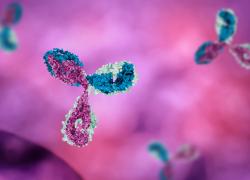
Kivu and Menarini against the odds
New first-in-human trials include Kivu and Menarini projects acting on PKT7 and KIF18A.
New first-in-human trials include Kivu and Menarini projects acting on PKT7 and KIF18A.

In spite of the poor precedent of Genmab and AbbVie/Pfizer, PTK7 continues to attract biopharma as a target for development of antibody-drug conjugates. The latest to enter the fray, according to first-in-human study initiations on the clinicaltrials.gov registry, is the private California-based biotech Kivu Bioscience, with a project coded KIVU-107.
A similar criticism could be made of a KIF18A inhibitor that Menarini is taking into the clinic; that mechanism has seen something of a biotech resurgence, but Amgen is a notable big player that decided it had no future. Such risks notwithstanding, KIVU-107 has become Kivu’s first clinical project, a year after the company raised $92m from venture financiers.
It’s somewhat surprising that it’s taken Kivu so long to get its act together and take a project into clinical trials. It’s also surprising that the company chose PTK7 as the first target to go after; so far Genmab and AbbVie/Pfizer have been burned here, respectively discontinuing the ADCs GEN1107 and cofetuzumab pelidotin.
One key aspect is that KIVU-107 uses ADC linker-payload technology licensed from Lonza's Synaffix division; this is separately employed in several other companies’ ADCs, perhaps most notably in Innovent’s arcotatug tavatecan, which recently scored a $1.2bn deal with Takeda. Kivu’s pipeline reveals three other projects, but these have undisclosed targets.
KIF18A
Meanwhile, in KIF18A inhibition Volastra reported an 18% ORR with VLS-1488, an in-house molecule, at an ASCO presentation that also disclosed a 6% rate of grade 3 liver enzyme elevations.
Now Menarini is taking its shot at this mechanism, MEN2501, into phase 1 in ovarian cancer. Another recent phase 1 KIF18A inhibitor entrant is Accent’s ATX-295, but the key uncertainty around this approach is Amgen’s decision to discontinue sovilnesib; that molecule was in fact licensed to Volastra, which claims still to be developing it alongside VLS-1488.
Recently disclosed first-in-human studies*
| Project | Mechanism | Company | Trial | Scheduled start |
|---|---|---|---|---|
| ABX-001 | Non-oncolytic arenavirus | Abalos | Solid tumours, +/-Keytruda | 14 Oct 2025 |
| GB18-06 | GDF-15 nanobody | Kexing Biopharm | Healthy volunteers | 28 Oct 2025 |
| KIVU-107 | PTK7 ADC | Kivu Bioscience | Solid tumours | 15 Nov 2025 |
| MEN2501 | KIF18A inhibitor | Menarini | Platinum-resistant ovarian cancer | Nov 2025 |
| SHR-4298 | Undisclosed | Jiangsu HengRui | Solid tumours | Nov 2025 |
| SHR-4610 | Undisclosed | Jiangsu HengRui | Solid tumours | Nov 2025 |
| BG-75098 | CDK2 degrader | BeOne | Solid tumours, +/- BGB-43395 (CDK4 inhibitor) | 2 Dec 2025 |
| LY4584180 | BCL6 degrader | Lilly | Haem cancers | Feb 2025 |
Note: *these projects were first listed on the clinicaltrials.gov database between 10 and 19 Nov 2025.
Other recent first-in-human entrants include a pair of degraders, as well as a new approach to targeting GDF-15 to treat cancer cachexia.
That comes from Kexing Biopharm, with a molecule coded GB18-06. The most advanced industry assets with this modality are Pfizer’s ponsegromab and CatalYm’s visugromab, which are both in phase 2/3, but the difference with Kexing is that GB18-06 is a nanobody rather than a full-chain MAb.
In targeted degradation BeOne has been making a significant push, recently revealing a KRAS degrader to supplement the pan-KRAS inhibitor BGB-53038. The double is a repeat of BTK, where Brukinsa and BGB-16673 are BeOne’s respective inhibitor and degrader, and next up is CDK2, where the degrader BG-75098 will soon be in phase 1; BeOne earlier took the CDK2 inhibitor BG-68501 into the clinic, but initial data were underwhelming.
Lilly’s latest degrader is LY4584180, and targets BCL6. This puts it into direct competition against the struggling Arvinas, whose competing ARV-393 will see early data presented in a poster at ASH.
46













